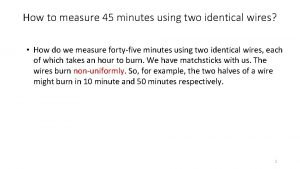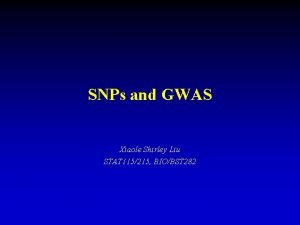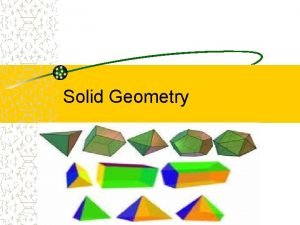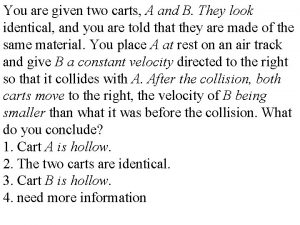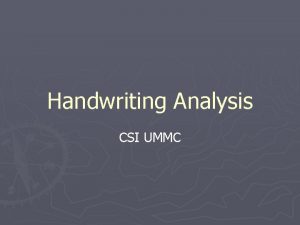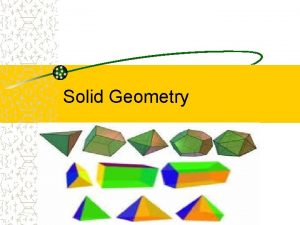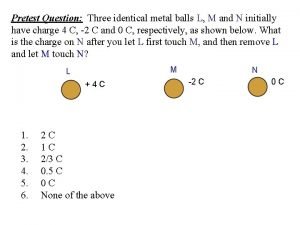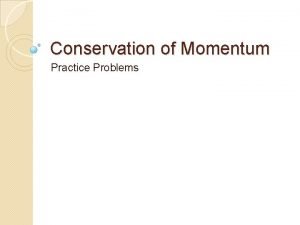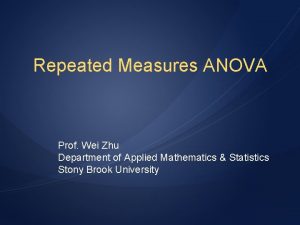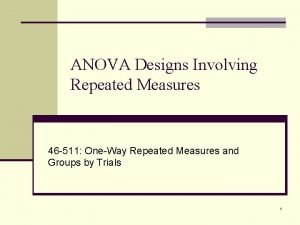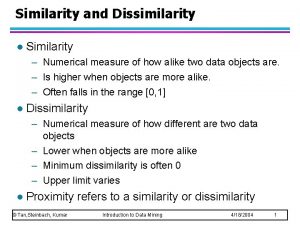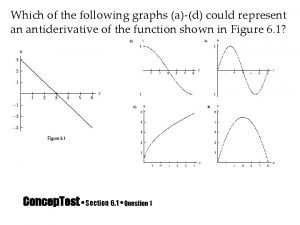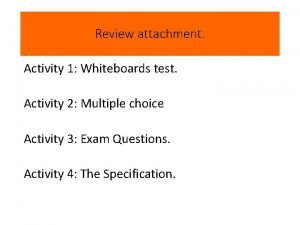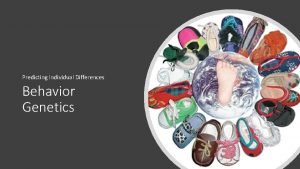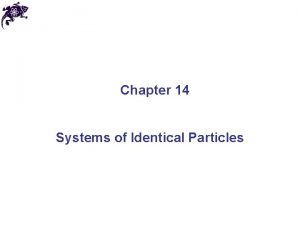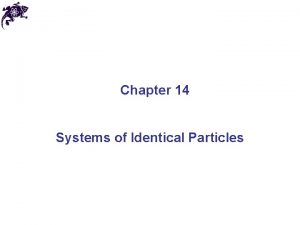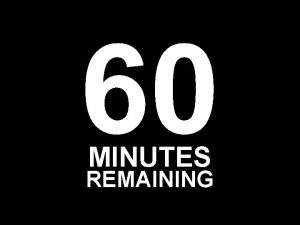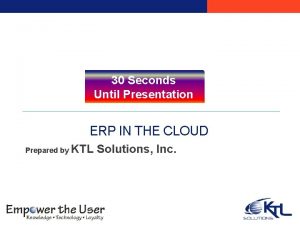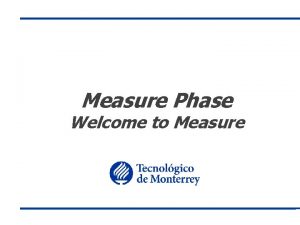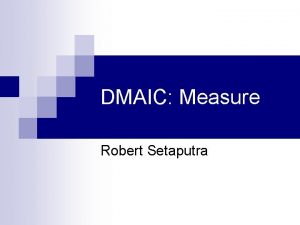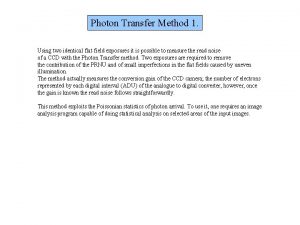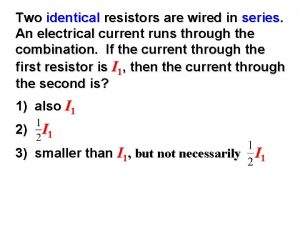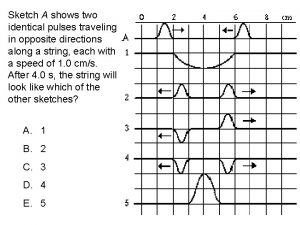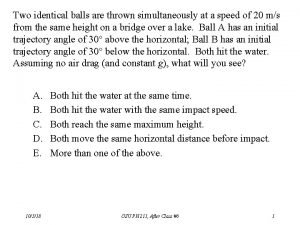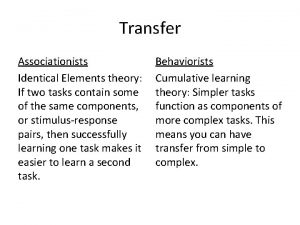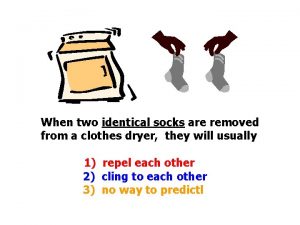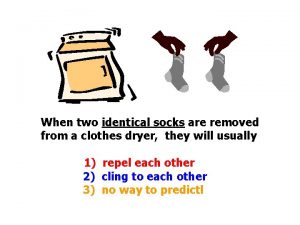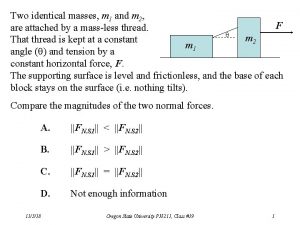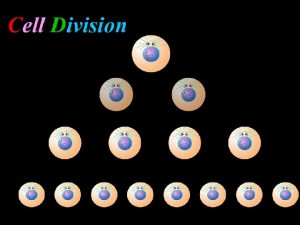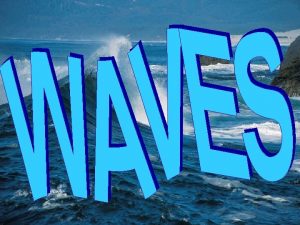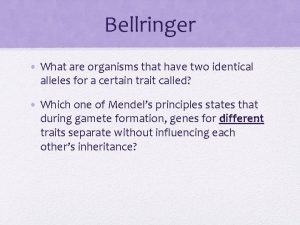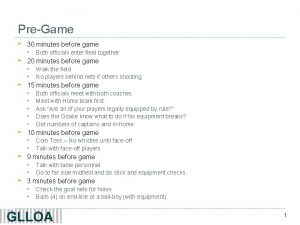How to measure 45 minutes using two identical











![Question Reformulation Model • Zero-shot translation [Johnson et al. 2016] • Train the model Question Reformulation Model • Zero-shot translation [Johnson et al. 2016] • Train the model](https://slidetodoc.com/presentation_image_h/039f57278c147548aa5f6e51a2dcc67c/image-12.jpg)










- Slides: 22

How to measure 45 minutes using two identical wires? • How do we measure forty-five minutes using two identical wires, each of which takes an hour to burn. We have matchsticks with us. The wires burn non-uniformly. So, for example, the two halves of a wire might burn in 10 minute and 50 minutes respectively. 1

How to measure 45 minutes using two identical wires? • Solution: Light up three of the four ends of the two wires. Once one wire is completely burnt, light up the fourth end. At 45 minutes, both wires are burnt completely. 2

Ten Words • We frame Question Answering (QA) as a Reinforcement Learning task. • We assume that the environment is opaque; the agent has no access to its parameters, activations or gradients. • These questions are hard to answer by design because they use convoluted language. • The major departure from the standard MT setting is that our model reformulates utterances in the same language. • While the parallel corpora are available for many language pairs , English-English corpora are scarce. • Clues are obfuscated queries such as This ‘Father of Our Country’ didn’t really chop down a cherry tree. • Here we find that the different sources of rewrites provide comparable headroom: the oracle Exact Match is near 50, while the oracle F 1 is close to 58. • We analyze the top hypothesis instead of the final output of the full AQA agent to avoid confounding effects from the answer selection step. • At the same time it learns to modify surface forms in ways akin to stemming and morphological analysis. 3

Ask the Right Questions: Active Question Reformulation with Reinforcement Learning Christian Buck et al. Google ICLR 2018, Oral Wang CHEN 13/02/2018

Problem Description • Jeopardy! Questions Answering from related context:

Problem Description • How to get the context related to the Jeopardy! question? 1. Search by google, and use the snippets on the first page (top 10) as the related snippets 2. Concatenate all snippets as the context 3. Finally get (query, context, answer)

The Framework in this paper • Active Question Answering (AQA): frame QA as a reinforcement learning task

The Framework in this paper • Active Question Answering (AQA): frame QA as a reinforcement learning task

The QA Environment • Bi. Directional Attention Flow (Bi. DAF) [Seo et al. , 2017]

The Framework in this paper • Active Question Answering (AQA): frame QA as a reinforcement learning task

Question Reformulation Model • Attention-based encoder-decoder model Key Problem: While parallel corpora are available for many language pairs (e. g. English-French), English-English corpora are scarce. Solution: Zero-shot translation + a few training steps on desired language pair [Britz et al. (2017)]
![Question Reformulation Model Zeroshot translation Johnson et al 2016 Train the model Question Reformulation Model • Zero-shot translation [Johnson et al. 2016] • Train the model](https://slidetodoc.com/presentation_image_h/039f57278c147548aa5f6e51a2dcc67c/image-12.jpg)
Question Reformulation Model • Zero-shot translation [Johnson et al. 2016] • Train the model on English->Spanish, English->French, French->English and Spanish->English • Add two special tokens to the data indicating the source and target languages. <From. English> <To. Spanish> Hello, how are you? -> Hola, ¿cómo estás? • Then we can use the model to English->English translation. • However, the quality is poor. • After a few training steps on English->English pair, the quality is much (Paralex database of qustion paraphrases) better. Zero-shot < monolingual < zero-shot + a few training steps on desired pairs < bridging

Question Reformulation Model •

Question Reformulation Model • Fine-tuned the pre-trained seq 2 seq model by Reinforcement Learning • The expected reward cannot be computed in closed form, but can compute an unbiased estimate with Monte Carlo sampling: • The final objective: Baseline reward: to lower the variance and stabilize the training Entropy regularization: to make more exploration

The Framework in this paper • Active Question Answering (AQA): frame QA as a reinforcement learning task

Answer Selection Model • 1 D CNN + Max-pooling + fully connected + binary classification [Yoom Kim, 2014] (Similar but not the same) • Training: Binary Classification • Dataset Building: • The triples, whose answer’s F 1 score is above the others’ average F 1 score, are labeled as positive.

QA Experiments • Dataset: Search. QA • Preprocessed Jeopardy! question + answer + searched snippets related to the question from Google’s top search results Number of Examples Training 99, 820 Validation 13, 393 Testing 27, 248 Initial training of Bi. DAF model The training set is used thrice RL-based tuning of the reformulator Training of answer selector

The Framework Training • Active Question Answering (AQA): frame QA as a reinforcement learning task 1. Pre-train the reformulator: • Zero-shot + a few training steps on desired pairs • Dataset: multilingual U. N. Parallel Corpus; Paralex 2. Pre-train the QA environment (Bi. DAF) • Dataset: Search. QA 2. RL-based tuning of the reformulator • Reinforcement learning • Dataset: Search. QA 3. Answer selector training • Binary classification • Dataset: Search. QA

QA Experiments • Quantitative, N=20 ASR: Attention Sum Reader MI-Sub. Query: a rule-based question refomulator Base-NMT: attention-based seq 2 seq model without RL tuning AQA: the proposed active question answering framework EM: exact match Top. Hyp: only use the top hypothesis (reformulation) Voting: use the Bi. DAF score to do answer selection Max. Conf: select the answer with the single highest Bi. DAF score CNN: use the proposed learned answer selector

QA Experiments • Question Qualitative Term Frequency More repeated terms (higher TF) longer AQA-QR Document Frequency Question Clarity More informative context terms than Search. QA (lower DF) Similar question clarity (QC) with Search. QA

QA Experiments • Reformulation Examples

References • M. Seo, A. Kembhavi, A. Farhadi, and H. Hajishirzi. Bidirectional Attention Flow for Machine Comprehension. In Proceedings of ICLR, 2017. • D. Britz, A. Goldie, M. Luong, and Q. Le. Massive exploration of neural machine translation architectures. http: //arxiv. org/abs/1703. 03906, 2017. • M. Johnson, M. Schuster, Q. V. Le, M. Krikun, Y. Wu, Z. Chen, N. Thorat, F. Viégas, M. Wattenberg, G. Corrado, M. Hughes, and J. Dean. Google’s Multilingual Neural Machine Translation System: Enabling Zero. Shot Translation. http: //arxiv. org/abs/1611. 04558, 2016. • Yoom Kim. Convolutional Neural Networks for Sentence Classification. http: //arxiv. org/abs/1703. 03906, 2017.
 Measure 45 minutes using 2 wires
Measure 45 minutes using 2 wires Identical by descent vs identical by state
Identical by descent vs identical by state 1 hour= minutes
1 hour= minutes A solid object with two identical ends and flat sides
A solid object with two identical ends and flat sides You are given two carts a and b
You are given two carts a and b Two people can have identical handwriting.
Two people can have identical handwriting. Two buckets spin around in a horizontal
Two buckets spin around in a horizontal A solid object with two identical ends and flat sides
A solid object with two identical ends and flat sides Three identical metallic balls
Three identical metallic balls Momentum practice problems
Momentum practice problems Gibbons jacobean city comedy download
Gibbons jacobean city comedy download Barometer
Barometer Two million minutes
Two million minutes Two-way repeated measure anova
Two-way repeated measure anova Ssres formula
Ssres formula Concurrent criterion validity
Concurrent criterion validity Numerical measure of how alike two data objects are
Numerical measure of how alike two data objects are Using system using system.collections.generic
Using system using system.collections.generic Unit 25 special refrigeration system components
Unit 25 special refrigeration system components Which of the following graphs are identical?
Which of the following graphs are identical? Mind rhyming words
Mind rhyming words Rita and holly are identical twins
Rita and holly are identical twins Fraternal vs identical twins
Fraternal vs identical twins
